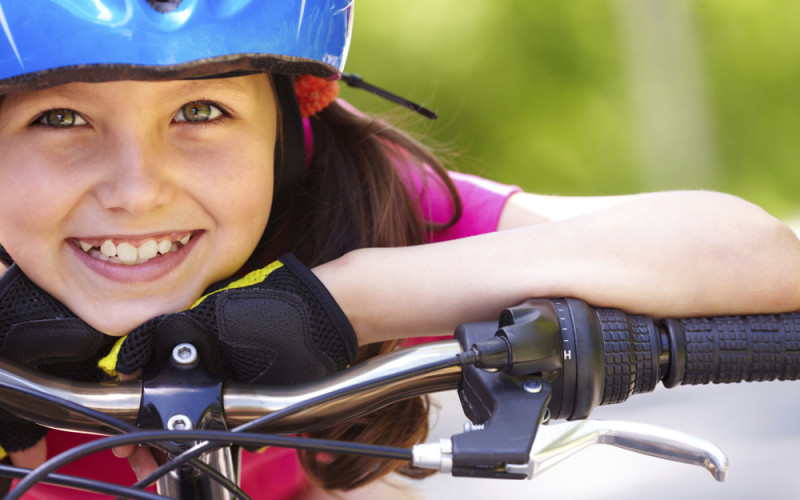Helmets help keep your kids safe while riding a bike

Summertime is here! I remember the days of hopping on my bike and spending the day riding around the neighborhood with my friends. We didn’t give much thought to wearing helmets. But today we are much more aware of the potential dangers of riding our bikes without a helmet and the potential life-changing consequences associated with brain injuries. Bike riding can be a healthy sport that keeps children active. But, as with any sport, it is important to practice some basic safety rules. It’s amazing how one simple act, wearing a helmet, can change a person’s life, forever.
Every year, emergency departments will see more children ages 5-14 for bicycle related injuries than any other sport. Despite this statistic, about 55% of children do not always wear a helmet when riding a bike. Research has shown that the risk of head injuries is reduced by 45% when the bike rider is wearing a helmet. The risk of brain injury is reduced by 33%, facial injuries by 27% and the risk of death can be reduced by 29% (SafeKids.org).
While wearing a helmet is key, it is also important to have your child wear a helmet that fits properly. But, how do we know if a helmet is properly fitted? Here is a simple 6 step process for the proper fitting of a helmet as recommended by the National Highway Traffic Safety Administration:
- Size: When trying on a helmet, make sure it fits snugly. It should be sitting on top of the head and it should not rock from side to side. If sizing pads are included with your helmet use the pads to fit the helmet securely.
- Position: The helmet should sit level on the head low on the forehead. It should be about 2 finger-widths above the eyebrow.
- Buckles: Center the left buckle under the chin. Adjust the straps as needed.
- Side Straps: Adjust the slider on both straps to form a “V” shape under and slightly in front of the ears. Lock the slider if possible.
- Chin Straps: Buckle your chin strap. Tighten until it is snug. No more than one or two fingers should fit under the strap.
- Final Fitting: If you open your mouth wide the helmet should pull down on the head. If not tighten the straps as in step 5
Let’s set a good example: one of the best ways to ensure your child wears their helmet is to wear your own helmet!